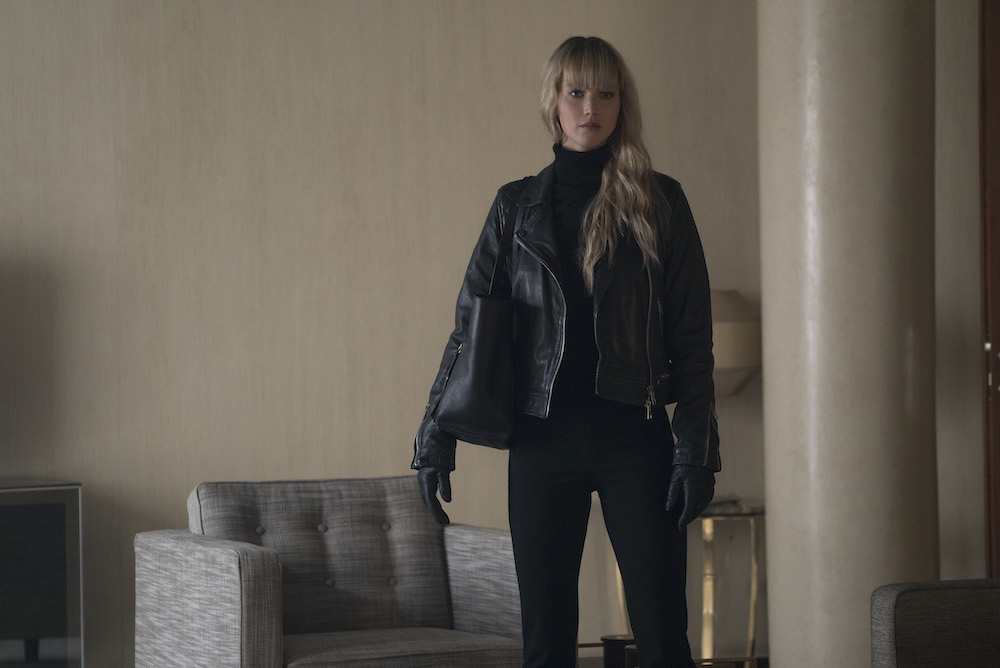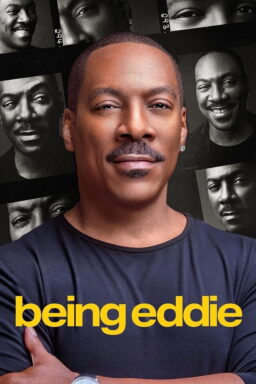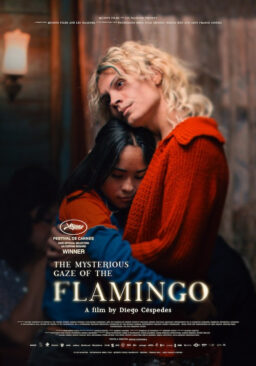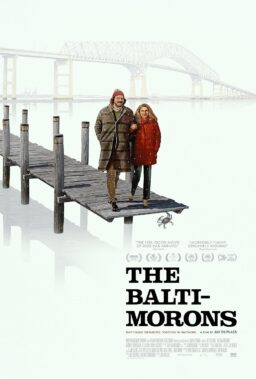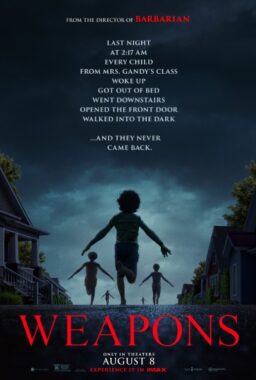Hollywood is built on negotiations. Managers negotiate rates, stars negotiate their time. But actresses are often gifted an additional element to negotiate: the surrender of their bodies for the camera. Where a bare breast was once considered taboo, now audiences barely bat an eye at female nudity. It’s expected, anticipated, demanded. With the rise of #MeToo and #TimesUp we’ve seen women gain equal pay and a more comforting atmosphere regarding sexual harassment, yet on-screen nudity remains an ambiguous gray area. The problem doesn’t lie with the actresses who choose to engage in nudity on-screen or not. Rather, Hollywood marketing and audience interest still encourages the consumption of female bodies, in spite of increased awareness of the male gaze and the continued statistics charting the lack of male nudity on-screen. Actresses today feel the need to “explain” their reasons behind deciding to be nude or not, damned if they do or if they don’t, all in an aid to justify the audiences’ comfort lusting after female flesh and perpetuating the continued double standards regarding male and female nudity in film.
The statistics show such a double standard: A 2016 report from St. Mary’s University states actresses are three times likelier to be nude on-screen compared to their male counterparts and teenage girls are two times as likely in comparison to teen boys. There is nothing wrong with an actress deciding to be nude on-screen, and with more discussion of female sexuality and sexism there is an acknowledgement of the history of exploitation over women’s bodies. Jennifer Lawrence and Scarlett Johansson have been vocal about their desire to be nude in their films. Lawrence explained in a 2018 interview for “60 Minutes” that her topless sequences in “Red Sparrow” made her feel “empowered,” acting as a reclamation of her body after illegally obtained photos of her were posted online. Lawrence felt empowered, and her experience should not be negated regardless of her decision.

But it’s hard not to see these decisions as mitigation masquerading as empowerment. Johansson also felt that audiences’ needed to see women’s bodies as unglamorous, according to a 2015 interview for W magazine. So when she decided to bare all for “Under the Skin” she wanted the nudity to be “practical” and not reliant on her bombshell persona. Johansson never delves into the Hollywood history involved that led to discussion of “practical” nudity, only emphasizing her own ideas in removing the glamour from it. Even “Game of Thrones” star Emilia Clarke, who infamously stipulated she wouldn’t do further nudity on “Game of Thrones” has argued since that she’s willing to do it if the plot demands it. Lawrence, Johansson and Clarke felt comfortable and in control, and while their nudity contributed to the skewed statistics around female bodies on-screen, there’s a knowledge that negotiations of these intimate moments must be in favor of women. However these arguments fail to touch on how actresses remain the ones having to decide whether the audience can consume their bodies.
The question is, why are these numbers the way they are if women are feeling more empowered about their decisions? Why are women still doing this at higher rates than their male costars, if not to satisfy assumedly male audiences and filmmakers who create reasons for female bodies to be exposed? When “Call Me by Your Name” premiered last year, screenwriter James Ivory bemoaned the lack of male nudity, citing stipulations in the actors’ contracts that prohibited it. Yet the movie still contains nudity from actress Esther Garrel. Films continue to cater to the male gaze, yet actresses are now appearing to believe that the gaze can only be changed by exposing themselves, or at least giving off an air of having control over where that exposure happens.
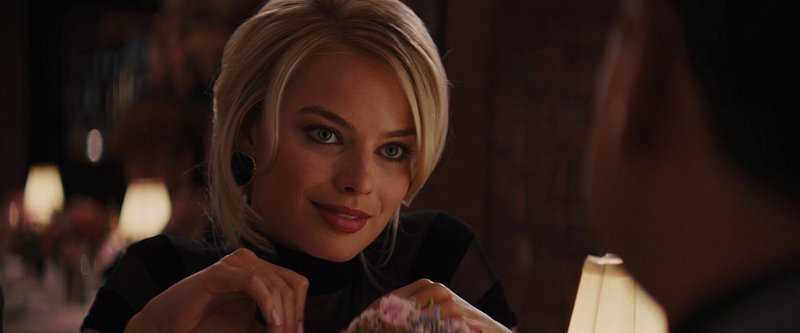
With the numbers still heavily skewed in favor of female nudity, movies remain mired in misogynistic beliefs that female bodies should be seen on-screen. Sex still sells, but as actresses struggle to cement their autonomy in a male driven Hollywood, they’re compelled to work with these outdated narratives and build upon them, exposing themselves for titillation and legitimacy. When Margot Robbie bared all in 2014’s “The Wolf of Wall Street,” late night news commentators, as well as male audiences, zeroed in on it. Kimmel himself asked Robbie about being naked and the actress admitted she lied to her family and avoided her hometown in its wake. It’s unclear whether she was concerned about their reaction or their interest in her body. Robbie’s follow-up, a cameo in a bathtub in “The Big Short,” was heavily played up in the film’s marketing, situating her sexuality (and implied nudity) as a key reason to see it. Since then Robbie’s avoided nudity in her features, including her Academy Award-nominated role as disgraced figure skater Tonya Harding.
In a way, Robbie is a prime example of how actresses are compelled to negotiate their exposure, giving the audience their fill upfront (preferably in a feature with a respected director) as a means of situating herself as a serious actress who can refuse to be nude in future. It is only by indulging male fantasies that she can be taken seriously. This isn’t a knock on Robbie, but again a criticism of the male-driven power structure that sees female nudity as a “plot points” or a reason to sell a feature. This is a facet exacerbated by tabloid interviews and other media that simultaneously cite actresses who do nudity as brave and courageous, yet often couched the entirety of their interview on nudity, forever keeping the onus on female bodies regardless. Sometimes this can be positive, such as Kate Winslet’s assertions that she does nudity as a means of showcasing different bodies to women, but it still requires actresses couch their nudity not as a means of expressing themselves or their art, but to come up with a way to legitimize their decision. Male nudity is never questioned in similar terms, if at all. When Michael Fassbender did full-frontal nudity in the 2011 feature “Shame” much of the questioning was humorous, with male commentators patting him on the back in praise. Men don’t need to justify the few times nudity is asked of them, women do.
Marketing women’s bodies in general isn’t the only legitimizing technique employed. Sometimes an actress going nude can be sold and consumed by the audience as a change of persona. The audience is given the power to judge how effectively an actress is not just nude—presumably unburdening herself of a previous image—but, by extension, whether the actress can cement herself as a serious actress. Nudity becomes synonymous with an actress’ ability to act, being naked is perceived as edgy. Elizabeth Berkley went from Bayside High to playing Nomi Malone in 1995’s “Showgirls” where it was perceived as a tossing aside of Berkley’s teen image yet is considered now a career misfire. Why? Why are some actresses able to find legitimacy and a persona change through nudity while others crash and burn? “Showgirls'” status as the best worst movie of all time aids in the argument that it’s all about the film negating the nudity.
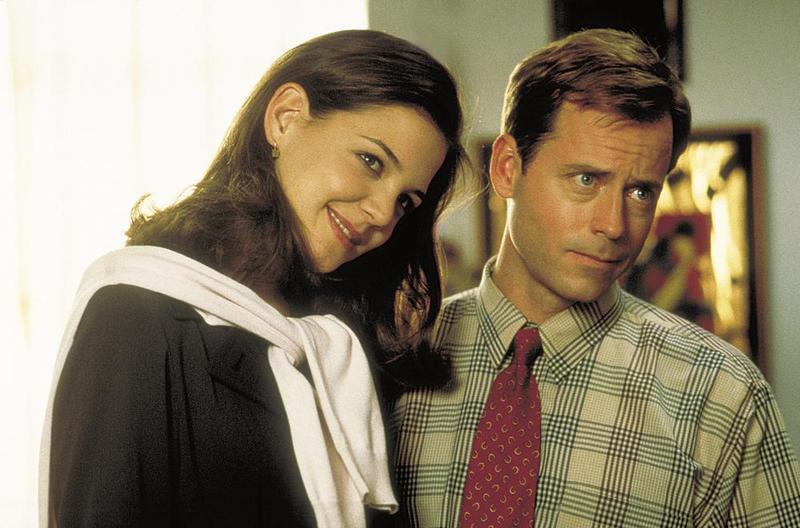
When Katie Holmes went topless in 2001’s “The Gift,” audiences weren’t just sold a psychological thriller starring Cate Blanchett, but the film where “Dawson’s Creek” good girl Joey Potter (Katie Holmes) goes nude. (Three years later the comedy “Harold and Kumar Go to White Castle” would belabor this point, referring to Holmes as “nice, wholesome girl” whose breasts are the “opposite” of the Holocaust.) With just ten seconds of nudity, male audiences were given free reign to salivate over the young woman, a fact felt in reviews of the movie by male critics who made no bones about using their criticism as a shield for their lust. In Peter Travers’ review of “The Gift” for Rolling Stone he didn’t even wait till the second paragraph before declaring Holmes a “superbabe” and how her “baring her boobs” was all that was needed to secure his DVD purchase. He never elaborates on Holmes’ acting, just situating the movie as a generic thriller that could be used as porn for the male audience.
Anne Hathaway’s topless scene in 2005’s “Havoc”—which Empire referred to in 2006 as “the film where Anne Hathaway takes her kit off”—left audiences’ thinking Hathaway was shedding her Disney-cultivated image. She followed this up with additional nudity in the Academy Award-nominated feature “Brokeback Mountain.” “Havoc”’s limited theatrical window prevented audiences from seeing it till years after Hathaway became an A-list star. But in “Brokeback Mountain,” comparisons are drawn between this and “Call Me by Your Name,” wherein the two male leads are overly clothed in contrast to the heterosexual female. The idea of male nudity, regardless of romantic context, is still shied away from by male directors in favor of the more palatable appearance of straight females. Hathaway followed things up with the crowd-pleasing “The Devil Wears Prada” the next year, and has avoided nudity since. Is this another example of an actress finding legitimacy after doing nudity?
The longer women spend cultivating a particular image the harder it is to break out of that, and sometimes nudity can divorce an audience from an actress entirely. In Blake Edwards’ 1981 comedy “S.O.B.” Julie Andrews’ caricature of herself, actress Sally Miles, is famous for playing Peter Pan. But audiences have turned away from her, leaving Sally compelled to present herself as a sexual figure, baring her breasts in the process. “S.O.B.” looks at an actress’ reinvention through nudity in the bluntest terms. Women should be considered sexual figures, yet nudity is perceived as the lone route to take this. It doesn’t matter that Miles, and by extension Andrews, is a fantastic actress, audiences want to see her as a sex object, and all that that implies. Miles does it, receiving acclaim and another Oscar out of the deal, but the audience questions their complicity in forcing Mary Poppins (again, this is Andrews in all but character name) to do this.
Do men not want their dream girl fantasy ruined? Female nudity requires audiences to question whether they can separate the actress from the character. Sometimes this is impossible to do, as in the case with Meg Ryan. Her nudity in the 2003 feature “In the Cut” left critics questioning why Ryan would darken “her hair and suppress all her characteristic perkiness.” Holmes, Berkley, Ryan and Andrews embodied all that was wholesome and pure, nudity—a means of reclaiming their autonomy and presenting themselves as actual women—backfired because the audience couldn’t mitigate good and wholesome with real and sexual.

Women of color have a far harder time in this arena, receiving less benefit of the doubt in comparison to white actresses. It isn’t enough to be gazed at by audiences, but failing to conform to an image can cost a career. Lisa Bonet’s topless scene in the 1987 feature “Angel Heart” was touted, like Holmes, as a means of transitioning the teen star of “The Cosby Show” towards adulthood. But upon release the film audiences turned away, possibly because as a 2009 review of the film by Slant Magazine alleges, Bonet just couldn’t be seen as a bad girl. Bonet was fired from “The Cosby Show”, supposedly for violating the sanctity of her good girl image. Holmes herself went on to additional movies with her image just slightly dented by her choice to do “The Gift.” Bonet’s career stagnated for several years in the wake of “Angel Heart.”
There’s also additional room for coercion when it comes to actresses of color, mainly because their positions as dominant figures in the industry remain so precarious. Salma Hayek detailed in an op-ed against Harvey Weinstein that in order to secure the release of Frida she had to film a lesbian sex scene with nudity at Weinstein’s request. For Hayek, she had no problem exposing her body for the audience or the people on-set. Her problem was having to “be naked for Harvey Weinstein.” Hayek was coerced into exposing her body publicly, for both mass consumption and her abuser, and it’s difficult to not see a similar bargain being struck by actresses’ today that’s similar, albeit with less coercion.
Women of color are also limited in their ability to negotiate showing themselves off, as was the case with Halle Berry in the 2001 actioner “Swordfish.” Director Dominic Sena joked about how expensive Berry’s nudity was, and though Berry denied she received a significant pay increase for nudity, the story was enough to brand her “difficult.” Several of the film’s reviews buy into Sena’s story about Berry demanding “$250,000 for each breast,” making the meat of their reviews whether it was money well-spent. A 2001 review from Slant states “Berry throws artistic integrity out the door” with “spontaneous T&A exhibitions.” Audiences were the ones left to criticize the actress, not the director, for what they perceived to be exploitative.
Where does a woman’s artistic integrity and autonomy begin and end when it comes to nudity on-screen? It’s a delicate interplay with many unanswered questions. When actresses are interviewed on the subject, there’s little discussion about the systems in place, and thus it’s unclear how much “discussion” is done to entice a woman to go nude. And the numbers still show a clear division between male nudity and female nudity. With female bodies being consumed on-screen three times more than men, there’s little room for integrity when men are writing, directing, and deciding what gets made and are often the ones demanding nudity in the first place. Stars like Lawrence, Johansson, Jessica Alba and Kate Winslet, and Natalie Portman have been honest about their history with nudity or their outright refusal to do it. It should always be a woman’s decision whether to expose her body or not, but with the media and Hollywood creating so many justifications for it, are women really in control?
